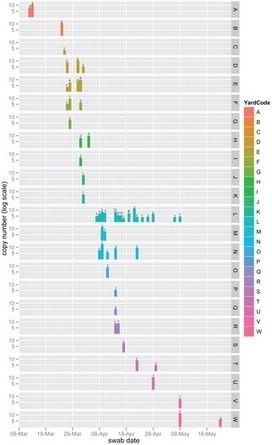PLOS Pathogens: Transmission of Equine Influenza Virus during an Outbreak Is Characterized by Frequent Mixed Infections and Loose Transmission Bottlenecks
See on Scoop.it – Virology and Bioinformatics from Virology.ca
From molecules to physiology
The ability of influenza A viruses (IAVs) to cross species barriers and evade host immunity is a major public health concern. Studies on the phylodynamics of IAVs across different scales – from the individual to the population – are essential for devising effective measures to predict, prevent or contain influenza emergence. Understanding how IAVs spread and evolve during outbreaks is critical for the management of epidemics. Reconstructing the transmission network during a single outbreak by sampling viral genetic data in time and space can generate insights about these processes. Here, we obtained intra-host viral sequence data from horses infected with equine influenza virus (EIV) to reconstruct the spread of EIV during a large outbreak. To this end, we analyzed within-host viral populations from sequences covering 90% of the infected yards. By combining gene sequence analyses with epidemiological data, we inferred a plausible transmission network, in turn enabling the comparison of transmission patterns during the course of the outbreak and revealing important epidemiological features that were not apparent using either approach alone. The EIV populations displayed high levels of genetic diversity, and in many cases we observed distinct viral populations containing a dominant variant and a number of related minor variants that were transmitted between infectious horses. In addition, we found evidence of frequent mixed infections and loose transmission bottlenecks in these naturally occurring populations. These frequent mixed infections likely influence the size of epidemics.
See on www.plospathogens.org
